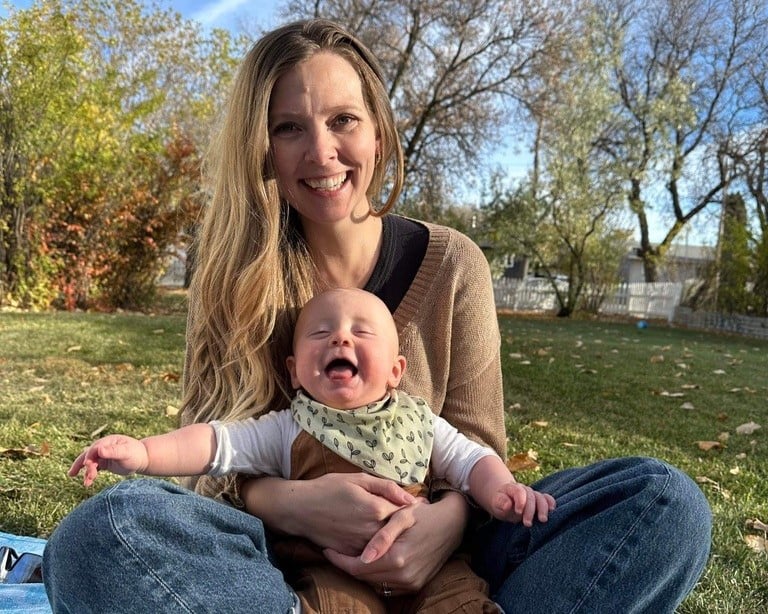World Day of Human Milk Donation is May 19. This global event promotes the importance of donating human milk to non-profit human milk banks.
As a labour, delivery and postpartum nurse at St. Paul’s Hospital, Leeza Gellvear often gives pasteurized donated human milk to her most vulnerable patients.
“I know how important access to donor milk is for premature babies and even for term babies that are in need of medical supplementation. We’re always so grateful when donor milk is available as it’s the next best thing to the mother’s milk,” she says.
“I always hoped that when I had a baby, I would be able to donate milk.”
Her hope became a reality after her son, Kipp, was born in May 2024. She was producing more than enough milk for him, so she started collecting extra for donation.
To date, Gellvear has donated 827 ounces (more than 24 litres) of milk to the BC Women’s Provincial Milk Bank, located at BC Women’s Hospital.
“I plan to continue to donate for as long as I can,” she says.
Why donor milk?
Human milk is considered the ideal food for babies because it provides a perfect balance of nutrients, is easy to digest, and contains antibodies that boost a baby’s immune system. While milk from the birthing parent is always the first preference, sometimes it’s not possible for an infant to get all their nutrition this way. Pasteurized human donor milk is the next best option.
The Milk Bank ships milk to over 20 BC hospitals, including all 14 Neonatal Intensive Care Units (NICUs). The St. Paul’s Hospital NICU and maternity unit receive 200 two-ounce bottles of frozen, bottled human donor milk each month. Most of that is given to the smallest babies in the NICU, but babies born with certain medical conditions may also be offered donor milk.
The most common reasons babies at St. Paul’s receive donor milk are:
- Low blood sugar
- Jaundice
- Higher weight loss
- Late preterm birth
- Latching challenges
Meanwhile, families aiming to exclusively breastfeed may temporarily use donor milk to feed their baby while the birthing parent is initiating their milk supply.
“We feel so fortunate to have access to pasteurized donor human milk,” says Andrea Firmani, Clinical Nurse Educator at the St. Paul’s Pregnancy, Birthing and Newborn Centre. “Most families seem to come with some awareness of what donor milk is and once they’re given all the patient education they are always happy to have a choice and be able to have access to donor milk. We really feel thankful for our Provincial Milk Bank.”
Firmani also leads the Baby-Friendly Initiative at St. Paul’s – a designation that recognizes best practices in infant feeding.
How donation works
When Gellvear returns to work after maternity leave, her role is Reproductive Mental Health Nurse Educator; and Perinatal Nurse in the Pregnancy, Birthing and Newborn Centre. She also teaches some prenatal classes at St. Paul’s.
Currently, she spends about 20 minutes a day pumping for the Milk Bank and stores the milk in her freezer. When her freezer gets full, she drops off the milk at a designated collection centre.
“The Milk Bank makes it really easy to do the drop off. They accept any volume so I’m able to clear out my freezer whenever needed. They make a point of coming out to my car and are always so kind and thankful,” she says.
The Milk Bank heat-treats (pasteurizes) donated milk and distributes it to hospitals in BC. Since it started operating in 1974, the Milk Bank has collected 78,000 litres of human milk and helped thousands of babies and children across the province receive human milk.
“It makes me so happy to know that I am helping babies in need. I feel connected both to my workplace and other parents that are needing help,” Gellvear says. “I know how cherished donor milk is and I’m honoured to be a part of that process.”
Globally, over 750 milk banks in 66 countries provide over one million liters of human milk to over 800,000 infants every year.
Learn more about becoming a donor.





